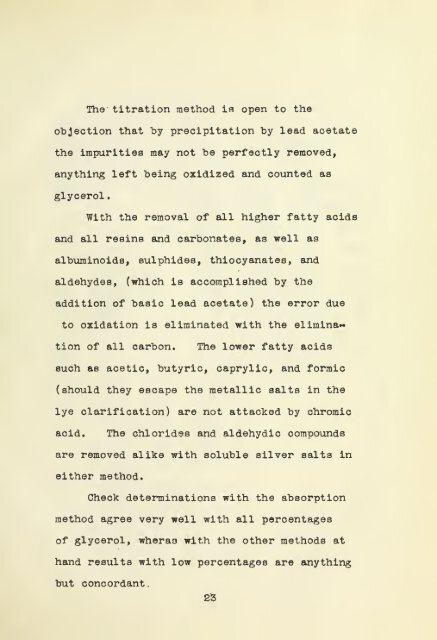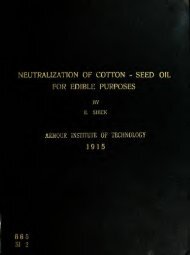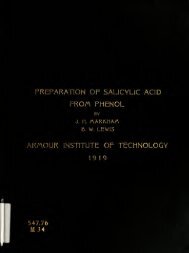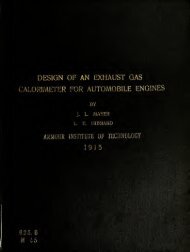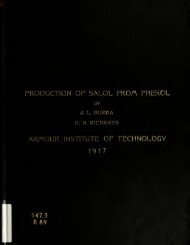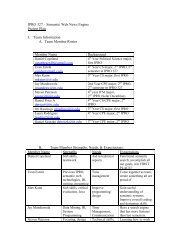Glycerol and spent lye clarification - Illinois Institute of Technology
Glycerol and spent lye clarification - Illinois Institute of Technology
Glycerol and spent lye clarification - Illinois Institute of Technology
You also want an ePaper? Increase the reach of your titles
YUMPU automatically turns print PDFs into web optimized ePapers that Google loves.
The titration method is open to the<br />
objection that by precipitation by lead acetate<br />
the impurities may not be perfectly removed,<br />
anything left being oxidized <strong>and</strong> counted as<br />
glycerol.<br />
With the removal <strong>of</strong> all higher fatty acids<br />
<strong>and</strong> all resins <strong>and</strong> carbonates, as well as<br />
albuminoids, sulphides, thiocyanates, <strong>and</strong><br />
aldehydes, (which is accomplished by the<br />
addition <strong>of</strong> basic lead acetate) the error due<br />
to oxidation is eliminated with the elimina*-<br />
tion <strong>of</strong> all carbon. The lower fatty acids<br />
such as acetic, butyric, caprylic, <strong>and</strong> formic<br />
(should they escape the metallic salts in the<br />
<strong>lye</strong> <strong>clarification</strong>) are not attacked by chromic<br />
acid. The chlorides <strong>and</strong> aldehydic compounds<br />
are removed alike with soluble silver salts in<br />
either method.<br />
Check determinations with the absorption<br />
method agree very well with all percentages<br />
<strong>of</strong> glycerol, wherae with the other methods at<br />
h<strong>and</strong> results with low percentages are anything<br />
but concordant


